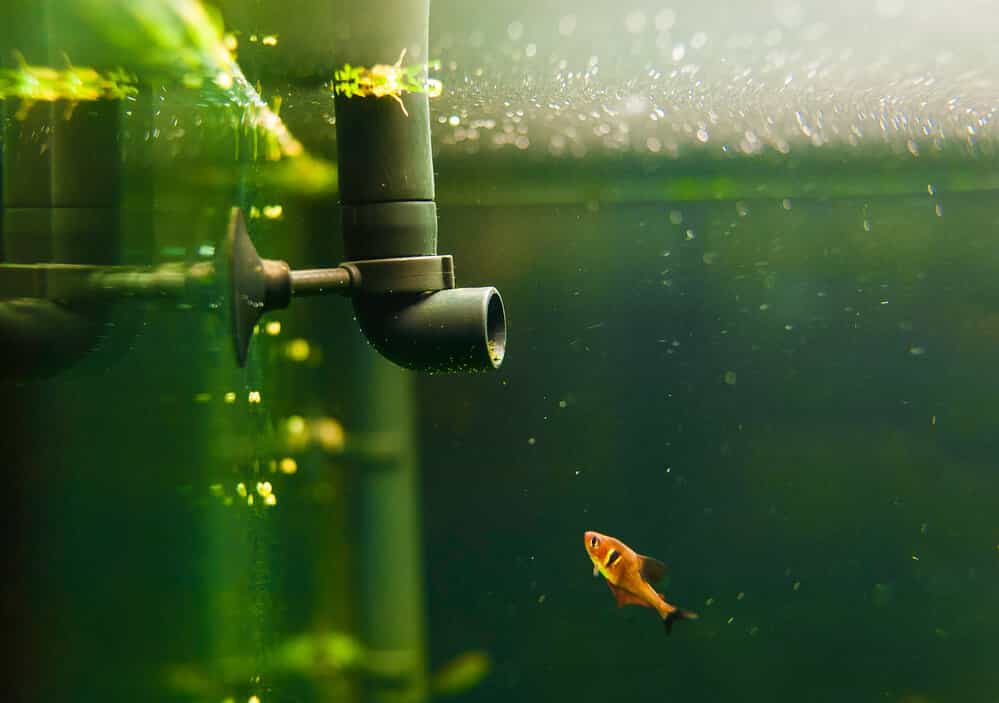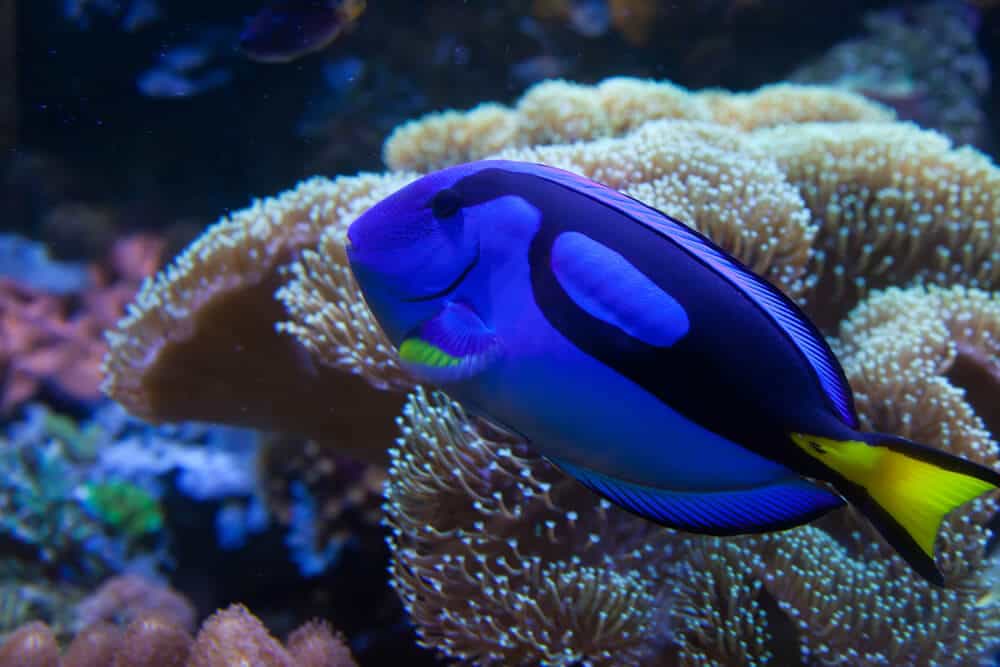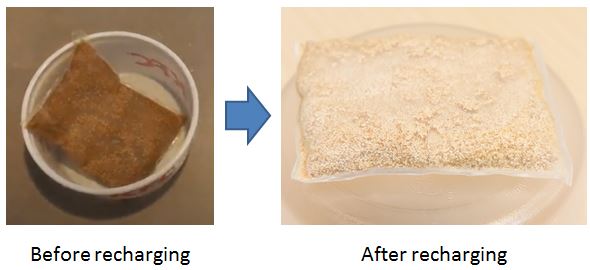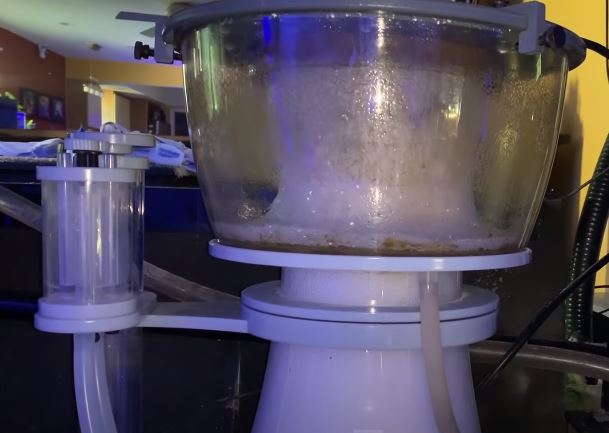
If you have an aquarium, or you’re thinking of getting one, then you know filtration is very important. Without a good filter in place, your tank water is going to get dirty very quickly.
One of the most important parts of your filtration system is the first: your mechanical filter.
So, which mechanical filter media are the best?
Mechanical filter media (MFM) is so important for having a healthy tank that there are a lot of options out there. That can make it confusing for anyone trying to decide on which type of MFM to use.
Luckily for you, we’ve found 4 of the best.
Don’t worry if you’re an absolute beginner with no idea what a mechanical filter is or why it’s so important. We’ve made this guide to help you understand everything there is to know!
See also:
1/ The Best Biological Filter Media
2/ Top 7 Best Canister Filters for Your Home Aquarium (Freshwater & Saltwater)
Contents
- A/ Best Mechanical Filter Media Reviews
- 1. Filter Pad(s)
- Aquarium Filter Pads – Premium True Dual Density Aquarium Filter Media Roll for Crystal Clear Water
- 2. Filter Floss
- inTank Bonded Blue & White Poly Filter Floss Pads 600-Square-Inches
- Blue Ribbon Pet Products Polyester Floss Bag Filter Media for Aquarium
- 3. Sponge
- LTWHOME Fish Pong Foam Filter Sponge Set 17” X 11” Media
- B/ Related Questions
A/ Best Mechanical Filter Media Reviews
Where it gets incredibly tricky is that there isn’t one type of MFM that’s best for everyone. What works the best for your aquarium may not work so well for someone else.
There are just too many factors involved for one MFM to be the best for all tanks. Things such as:
- Your filter type
- How big (or small) your aquarium is
- How many fish and plants you have
- The type of fish you have (and how big/small they are)
- Your filter’s (water) flow rate
- Your mechanical filter’s surface area
- How often you clean and/or replace your filter media
However, that doesn’t mean there aren’t some mechanical filters that are better than others.
Let’s take a look at the best 4 we’ve found for you.
1. Filter Pad(s)
Filter pads are easily the most common type of MFM used in aquariums.
Because most aquarium filter pads are sold in a roll, you can cut them to the right size for your tank. You also get filter pads made from different type of media, with different levels of coarseness.
Aquarium Filter Pads – Premium True Dual Density Aquarium Filter Media Roll for Crystal Clear Water
Aquatic Experts designed one of the best filter pads. Their Premium True Dual Density Aquarium Filter Media Roll is thicker than most others. That’s because it has 2 layers instead of just 1.
The top layer is made of open polyester fiber. This part is what your water should flow through first, because it will catch all the bigger debris in your tank. Things like extra fish food, solid fish waste, and pieces of plants that have broken off will get stuck here.
Next, your water flows through the bottom layer. This part is a lot finer, so that it can catch everything too small to get trapped in the first layer.
Pros:
- Because it comes in a roll, you can cut the Premium Dual Density Aquarium Filter Media to the right size for your filter.
- The filter pad is able to trap every kind of debris in your tank.
- Polyester fiber is very durable.
- Safe for your fishes.
- Because there are 2 layers, you won’t need to buy 2 rolls in order to get a coarse and a fine MFM.
- Buying rolls instead of pre-cut filter pads are a lot cheaper.
Cons:
- The Premium Dual Density Aquarium Filter Media can make your flow rate slower.
- You need to change your filter pad regularly, which can become expensive.
Interested in this product? Order the Premium True Dual Density Aquarium Filter Media Roll on Amazon today!
2. Filter Floss
Filter floss gets its name because it looks a lot like candy floss. It’s made of polyester fibers that have been bunched tightly together so that it can trap even the smallest of debris, like solid fish waste.
inTank Bonded Blue & White Poly Filter Floss Pads 600-Square-Inches
Similar to the filter pads, inTank Bonded Blue & White Polyester Poly Filter Floss Pads have 2 layers.
Water flows needs to flow through the coarse white layer first, to catch larger debris. The blue layer is finer and is used to catch the smaller debris that slips through the white layer.
Each filter floss pad is about 10-inches by 20-inches by 1-inch, though the thickness can be a little different depending on which batch you get.
However, you can also cut the pads to fit your filter. So if your filter is smaller, you might be able to get 6 filter floss pads out of the 3-pack.
Pros:
- Because it comes in such a big size, you can easily cut these poly filter floss pads to fit in any filter size.
- The dual-layer filter floss can trap almost all debris and waste.
- The synthetic polyester fibers are very durable.
- Safe for your fishes.
- Easy to replace.
Cons:
- You need to carefully monitor your water flow rate, because inTank Bonded Blue & White Poly Filter Floss Pads can slow it down.
- You need to rinse and reuse this product every week, but you can only do this once or twice before you have to replace it.
Interested in this product? Order the inTank Bonded Blue & White Poly Filter Floss Pads on Amazon today!
Or, check out another filter floss product:
Blue Ribbon Pet Products Polyester Floss Bag Filter Media for Aquarium
The Blue Ribbon Pet Products ABLPLY7 Polyester Floss Bag Filter Media is more like a traditional floss filter. Unlike the inTank Bonded Blue & White Poly Filter Floss Pads (above), this product hasn’t been turned into a pad.
You do need to have a mesh filter bag to put this polyester floss into your filter, though. If you pack it tightly enough, you won’t need to use any other MFM.
Most people use this filter floss as a second MFM rather than alone. If you want to do the same, then you should also buy the Aquarium Experts’ Premium True Dual Density Aquarium Filter Media Roll (above). You could also use a sponge instead (see below).
The biggest let-down of this product is that you can’t rinse and reuse it, unfortunately.
Pros:
- Easy to use.
- Cheaper than buying filter pads, especially if you pack it tightly as a fine filter.
- If you use it as a medium filter (packed loosely), it will last longer.
Cons:
- If you do use it as a medium filter, you need to buy filter pads or sponge as a pre-filter.
- This product will only work in HOB and canister filters.
- You can’t rinse and reuse Blue Ribbon Polyester Floss, so you’ll need to replace it when you notice that it’s becoming too clogged.
Interested in this product? Order the Blue Ribbon Polyester Floss Bag Filter Media on Amazon today!
3. Sponge
Because sponges are graded according to their pores per inch (PPI) count, this is fairly easy though. For filtering large debris, you need a 10 PPI sponge. 30 PPI sponges are best as a fine filter, for small debris.
You need to stay within this range, though. Anything with a higher PPI will clog too easily.
LTWHOME Fish Pong Foam Filter Sponge Set 17” X 11” Media
The LTWHOME Fish Pong Foam Filter Sponge Set is perfect for using as an MFM or as a dual purpose MFM + BFM filter.
You’ll notice that there are 3 sponges included in the set: green, black, and blue. The green sponge is fine (small debris), the black medium, and the blue coarse (large debris). It’s a good idea to use all 3 even if you have a separate BFM in place.
Simply cut the sponges down to size so they fit into your filter. Put the blue one in so that water flows through it first, then the black one, and the green one last.
Some people have complained that the blue and black sponges are exactly the same and that the green is actually medium, not fine. If you are worried about this, then you can combine the LTWHOME Fish Pong Foam Filter Sponge Set together with a filter pad.
Pros:
- You can cut the sponges smaller and make 2 sets if your filter size is right.
- You can use the LTWHOME Fish Pong Foam Filter Sponge Set as an MFM, BFM, or even both at the same time.
- This product can be used in freshwater and marine tanks.
- You can rinse these sponges in aquarium water (not tap water) and reuse them until they start to tear.
Cons:
- Some people complain that the blue and black sponges are both the same coarseness and that the green is actually medium.
- You can only use this product if you have a canister filter, as it doesn’t work very well with HOB cartridge filters.
Interested in this product? Order the LTWHOME Fish Pong Foam Filter Sponge Set on Amazon today!
B/ Related Questions
We’ve helped you find the 4 best MFM for 2019, but maybe you still have some questions. Don’t worry – we’ve got the answers!
What is Mechanical Filtration?
There are 3 types of filters that can (and should) be used in your aquarium:
- Mechanical Filtration
- Biological Filtration
- Chemical Filtration
In the same way that water moves through a fish net but fish are caught, water passes through your MFM but debris is caught. The MFM is used to trap this debris, such as solid fish waste and leftover fish food.
Water continues to flow through the other filters. When the water has passed through all your filter media, it’s pushed back into your aquarium. By this point, it should be nice and clean.
In What Order Should I Use Mechanical Filtration Media?
Your mechanical filter is the first part that your water needs to flow through.
MFM is one of the most important filter layers. You have to have MFM in your filter, otherwise your biofilter (the other most important layer) isn’t going to work properly.
As you can probably tell, your BFM will be second. Once your MFM has trapped all the large and small debris in your tank water, your BFM will take care of ammonia, nitrite, and nitrate.
Don’t know why we need to take care of ammonia, nitrite and nitrate? Click here!
Lastly, after your BFM, your water will go through a chemical filter. Your chemical filter will take care of other toxins that your MFM and BFM can’t filter for you. A chemical filter isn’t always necessary, but it’s always best to have all 3 types of filter media.
Can I Really Use Sponge as a Mechanical and Biological Filter Media at the Same Time?
Yes!
This is called “dual purposing” and if done right can save you some money. However, you do need to use extra sponges, not just one.
For example, if you use the LTWHOME Fish Pong Foam Filter Sponge Set, you should use all 3 sponges. Ideally, if your filter is small enough that you can cut the sponges in half, you should use 4 layers.
The coarser sponges (10 to 15 PPI; blue and black) will act in place of an MFM. Third, you should have the green sponge twice (2 halves, back-to-back). This will act as a BFM.
If you do decide to dual purpose, you need to be careful to test your ammonia, nitrite, and nitrate levels.
If dual purposing isn’t working properly, you can still use a sponge as an MFM, but will need to get a separate BFM.
When dual purposing, you should also clean your sponges at different times.
How Often Do I Need to Change My Mechanical Filter Media?
This depends on what type of MFM you’re using.
It is very important that you do change your MFM, though. Some people make the mistake of thinking that you don’t need to. If you don’t change your MFM, it will get clogged. When that happens, your flow rate will eventually stop. Your tank water will get dirty very quickly.
Another problem with not changing your MFM is that no oxygen reaches your BFM. This causes your bacteria to die.
The debris stuck in your MFM will also start to decompose and more toxins will be released into your tank.
Always carefully read the instructions on the packaging of your MFM to see how often you should clean or change them.
As a general rule, you should rinse filter pads and sponges once a week. Filter floss needs to be replaced as often. If your aquarium water is very clean, you might be able to wait 2 weeks though.
Remember that most filter pads can only be rinsed and reused once or twice before you need to replace them. Sponges can be reused many times – until you start noticing that the sponge is starting to tear.










